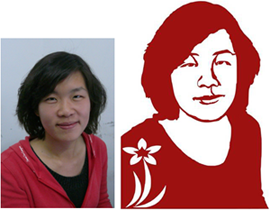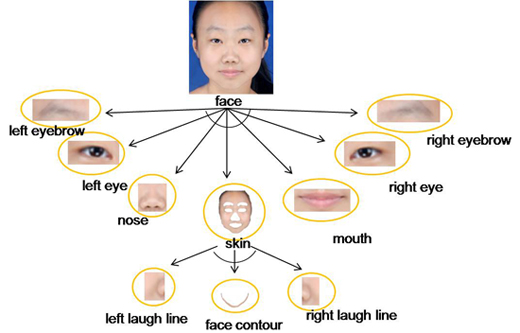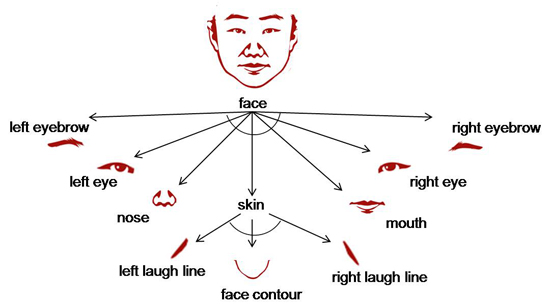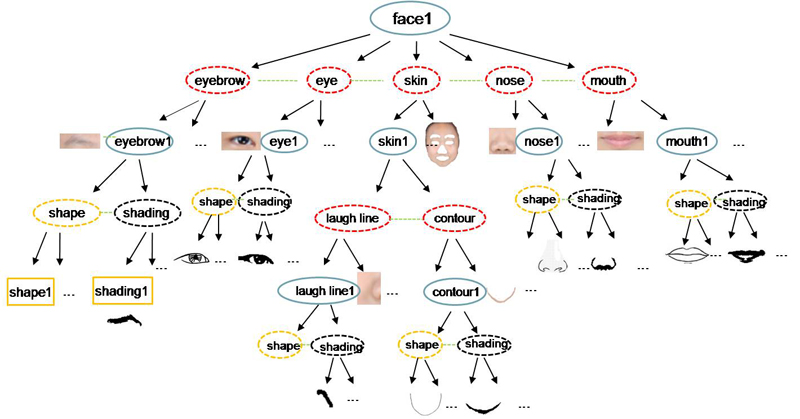Atistic Paper-cut for Human Portrait
Meng Meng1 Mingtian Zhao1,2
Song-Chun Zhu1,2
1Lotus Hill Institute;
2University of California, Los Angeles
1. Some results and how do we express computer-generated facial paper-cut
 |
 |
 |
 |
| Paper-cut is a traditional decorative art which is originated in China 2000 years ago. It is a binary image converted from real gray images(s) under a set of flexible constrains of geometric connectivity. However, from the perspective of paper-cut artists, it is a skill of not only cutting a piece of folded paper but also designing the artistic style for a particular human face in a specific posture, emotional expression, illumination, etc. Experienced artists will seize the most impressive features from the portrait or a real person at the first glance, and transform them into corresponding paper-cut components simultaneously, this is the basic rule for artistic rendering, but gives us a creative perspective in rendering artistic facial paper-cut from portrait. |
2. Ideas from image parsing
 |
 |
Since a valid facial paper-cut is a combination of a series of paper-cut components representative for each facial feature, we thus adopt the idea of image parsing inspired by the method proposed by Xu et al, in which a three-layer generative model is presented and fine face sketches are generated from a coarse to fine computation. The parsing graph illustrate a vivid process through which an intact face is decomposed into correlated nodes, more details are retained in dealing with each and-node, such as laugh lines, play a crucial role in depicting human facial expression. |
3. Preserve identity while rendering artistic styles

 |
We lay emphasis on two aspects in the paper-cut rendering process: preserving the identity of the face so that it can be recognized and simulating the artistic style of paper-cut from the view of empirical artists. Our method first calls for a balance between the binarized feature serving as shading information and the shape information provided directly by the portrait, a set of candidate templates for a particular facial feature( left eyebrow, right eyebrow, left eye, right eye, nose, mouth, face contour, laugh lines)are calculated through minimizing a weighed distance. Artistic style varies with a changing weighed parameter, such as a precise approximation of the portrait, or exaggeration based on particular configuration of facial features, it is up to the user to identify which is the most satisfying one. Finally a connection layer is added to the previous result to satisfy the geometric constrain of paper-cut. From observing a large number of manual portrait paper-cuts, several fixed patterns are appropriate for facial feature connection which are both physically adaptive and aesthetically pleasing.
|
References
|
[1] Zijian Xu, Hong Chen, Song-Chun Zhu and Jiebo Luo, "A hierarchical compositional model for face representation and
sketching," IEEE Trans. Pattern Analysis and Machine Intelligence(PAMI)'08.
[2] Feng Min, Jin-Li Suo, Song-Chun Zhu and Nong Sang, "An Automatic Portrait System Based on And-Or Graph Representation", EMMCVPR 2007 |